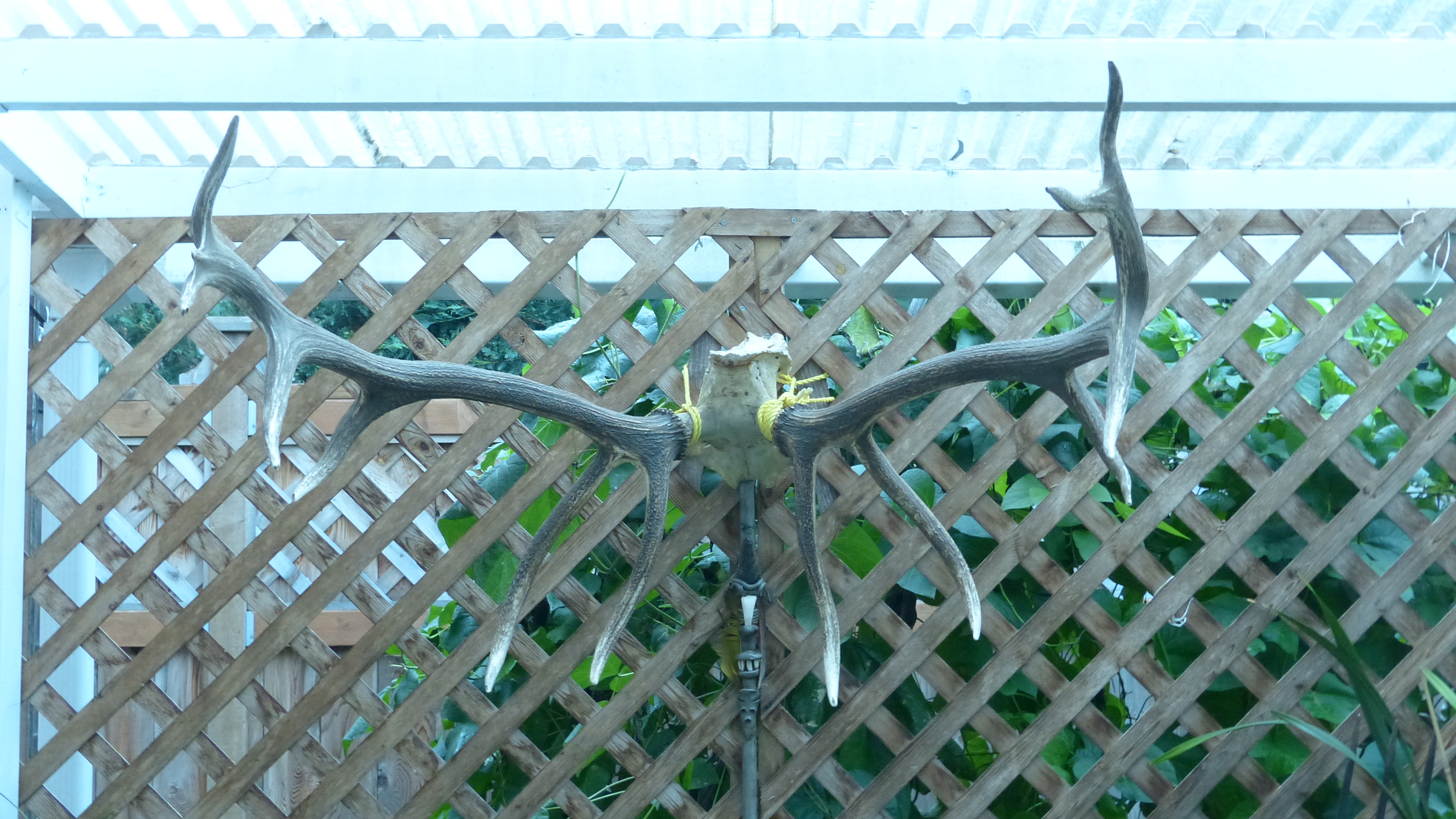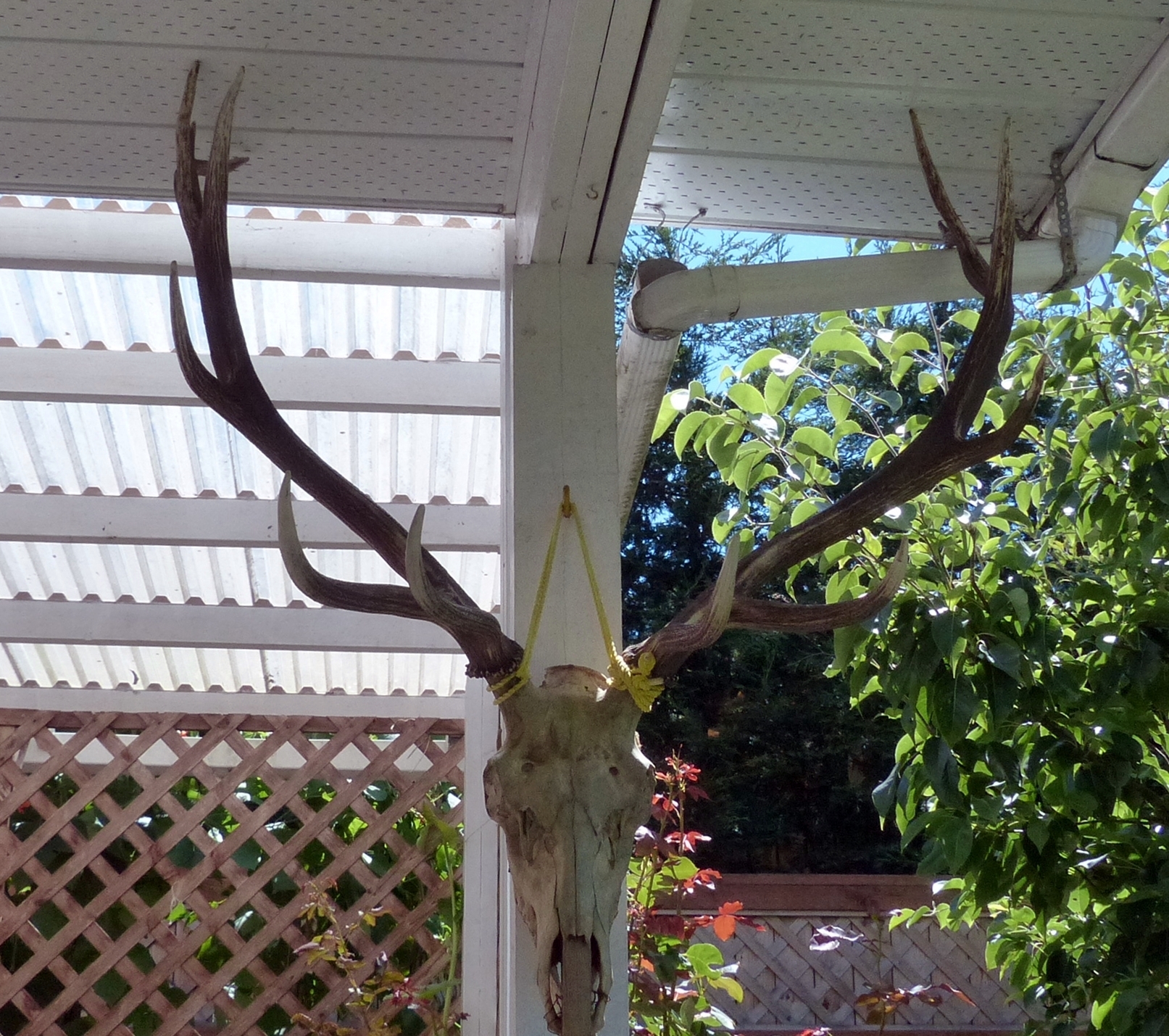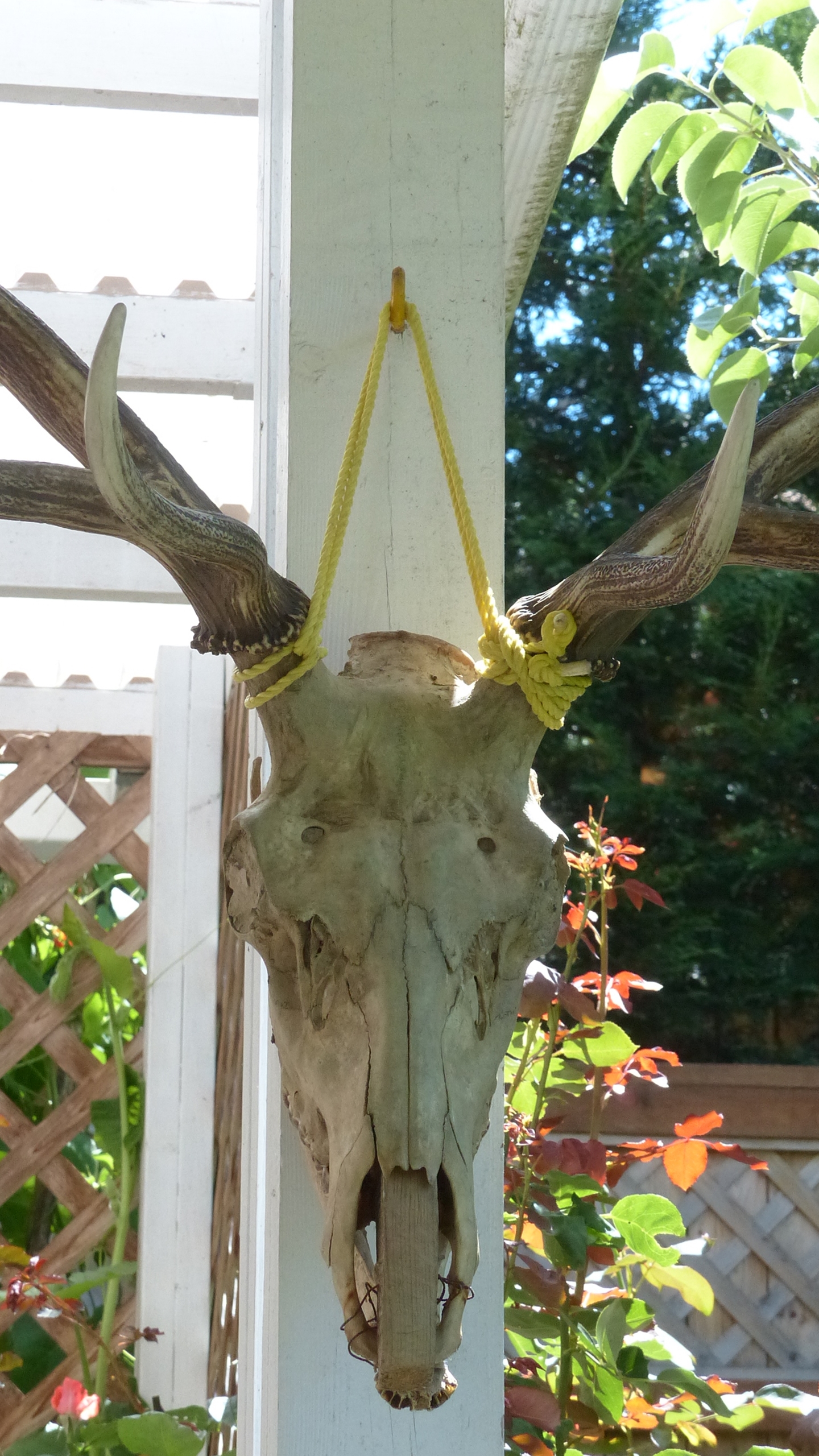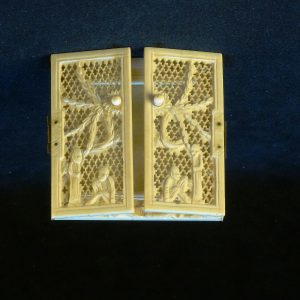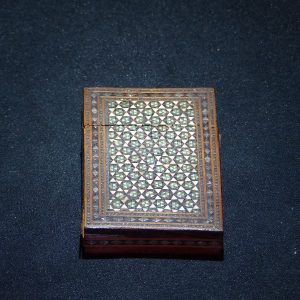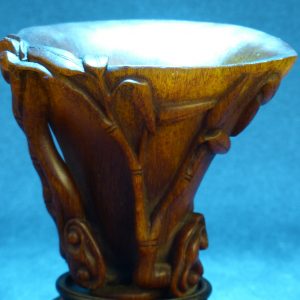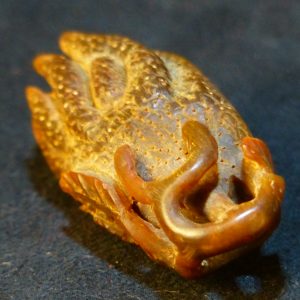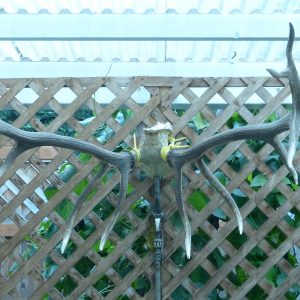Description
参考:纽约大都会博物馆
清 弘曆(乾隆皇帝) 鹿角 雙幅 卷 Two Paintings of Deer Antlers, Qianlong Emperor (Chinese, (1711–1799; r. 1736–95)), Two handscrolls; ink and color on paper, China
dated 1762 and 1767
Qianlong Emperor Chinese

清 弘曆(乾隆皇帝) 鹿角雙幅 卷 Two Paintings of Deer Antlers, Qianlong Emperor (Chinese, (1711–1799; r. 1736–95)), Two handscrolls; ink and color on paper, China

Two Paintings of Deer Antlers, dated 1762 and 1767
China, Qing dynasty (1644–1911)

清 弘曆(乾隆皇帝) 鹿角雙幅 卷 Two Paintings of Deer Antlers, Qianlong Emperor (Chinese, (1711–1799; r. 1736–95)), Two handscrolls; ink and color on paper, China

Two Paintings of Deer Antlers, dated 1762 and 1767
China, Qing dynasty (1644–1911)
Two handscrolls; ink and color on paper; a:Qianlong Emperor (Chinese, (1711–1799; r. 1736–95))


Two Paintings of Deer Antlers, dated 1762 and 1767
China, Qing dynasty (1644–1911)

清 弘曆(乾隆皇帝) 鹿角雙幅 卷 Two Paintings of Deer Antlers, Qianlong Emperor (Chinese, (1711–1799; r. 1736–95)), Two handscrolls; ink and color on paper, China
The Qianlong Emperor practiced both calligraphy and painting as a way of identifying himself with Chinese literati ideals of self-cultivation. However, the subject matter of these two scrolls reveals his concomitant desire to align himself with Manchu hunting traditions. Furthermore, the realistic rendering of texture and three-dimensional form reflects the influence of Western pictorial techniques, introduced to the court by Jesuit painters such as Giuseppe Castiglione (1688–1766).
The earlier of the two scrolls depicts the antlers of a spotted deer. In his accompanying inscription, the emperor recalls seeing a gigantic pair of eight-point antlers procured by his grandfather, the Kangxi Emperor (r. 1661–1722), in Central Asia—considered at the time to be an auspicious sign.
The second scroll, painted five years later, presents the horns of a species known in the West as Père David, so named for the eponymous Jesuit missionary and naturalist (1826–1900) who first recorded it in a Western source. In his accompanying essay, Qianlong describes different deer species and seeks to correct misleading distinctions made in the Book of Rites, a classic Confucian text.
Two Paintings of Deer Antlers, Qianlong Emperor (Chinese, (1711–1799; r. 1736–95)), Two handscrolls; ink and color on paper, China
Two Paintings of Deer Antlers, Qianlong Emperor (Chinese, (1711–1799; r. 1736–95)), Two handscrolls; ink and color on paper, China
Two Paintings of Deer Antlers, Qianlong Emperor (Chinese, (1711–1799; r. 1736–95)), Two handscrolls; ink and color on paper, China
Two Paintings of Deer Antlers, Qianlong Emperor (Chinese, (1711–1799; r. 1736–95)), Two handscrolls; ink and color on paper, China
Two Paintings of Deer Antlers, Qianlong Emperor (Chinese, (1711–1799; r. 1736–95)), Two handscrolls; ink and color on paper, China
Two Paintings of Deer Antlers, Qianlong Emperor (Chinese, (1711–1799; r. 1736–95)), Two handscrolls; ink and color on paper, China
Two Paintings of Deer Antlers, Qianlong Emperor (Chinese, (1711–1799; r. 1736–95)), Two handscrolls; ink and color on paper, China
Two Paintings of Deer Antlers, Qianlong Emperor (Chinese, (1711–1799; r. 1736–95)), Two handscrolls; ink and color on paper, China
Two Paintings of Deer Antlers, Qianlong Emperor (Chinese, (1711–1799; r. 1736–95)), Two handscrolls; ink and color on paper, China
Two Paintings of Deer Antlers, Qianlong Emperor (Chinese, (1711–1799; r. 1736–95)), Two handscrolls; ink and color on paper, China
Two Paintings of Deer Antlers, Qianlong Emperor (Chinese, (1711–1799; r. 1736–95)), Two handscrolls; ink and color on paper, China
Object Details
Artist:Qianlong Emperor (Chinese, (1711–1799; r. 1736–95))
Period:Qing dynasty (1644–1911)
Date:dated 1762 and 1767
Culture:China
Medium:Two handscrolls; ink and color on paper
Dimensions:a: 9 3/4 × 81 1/4 in. (24.8 × 206.4 cm)
b: 9 7/8 × 81 1/4 in. (25.1 × 206.4 cm)
Classification:Paintings
Credit Line:John Stewart Kennedy Fund, 1913
Accession Number:13.220.127a, b
Signatures, Inscriptions, and Markings
Inscription: SCROLL A
Artist’s inscriptions and signature
Zhu [Père David’s deer] Antlers in the South Park (1 column in semi-cursive script)
南苑麈角圖
“An Exposition on the Mi [elk or moose] Antlers” (34 columns in semi-cursive script, dated 1767):
麋角解説
壬午為〈鹿角記〉,既辨明鹿與麋皆解角於夏,不於冬,然 《月令》 既有其言而未究其故,常耿耿焉。昨過冬至,陡憶南苑有所謂麈者,或解角於冬,亦未可知。遣人視之,則正值其候,有已落地者,有尚在腦骨或雙或落其一者。持其已解者以歸,乃爽然自失曰天下之理不易窮,而物不易格,有如是乎?使不悉麈之解角於冬,將謂 《月令》 遂誤,而不知吾之謬更有甚於 《月令》 者矣。然則 《月令》 遂不誤乎?曰 《月令》 之誤,誤在以麈為麋,而不在冬之有解角之獸也。蓋鹿之與麋,北人能辨之,而南人則有所弗能。麋之與麈亦如是而已耳。且 《說文》 訓麈有麋屬之言,而 《名苑》 則又曰:“鹿大者曰麈,羣鹿隨之,視尾所轉而往。”夫鹿也,麋也,麈也,迥然不同,亦不相共羣而處。實今人所知者,而古人乃不悉其孰為鹿,孰為麋,孰為麈。則 《月令》 不云“夏至麋角解,冬至鹿角解”為幸矣,而又何怪乎其誤麈為麋也耶?既釋此疑,因為說以識之。《月令》 古書不必易,靈臺時憲,則命正訛以示信四海焉。[1]
說既成,書卷藏之石渠,並繪麈角卷端,為千載闢疑徵實。丁亥仲冬上澣御筆
Artist’s seals
Taishang huangdi zhi bao 太上皇帝之寳
Guxi tianzi 古希天子
Jingsheng Zhai 敬勝齋
Tiandi wei shi 天地為師
Shiqu baoji suocang 石渠寳笈所藏
Bazheng maonian zhi bao 八徴耄念之寳
Jian tianxin 見天心
Qing shang wei mei 情賞為美
Jing zhong guan zaohua 靜中觀造化
Qian, long 乾、隆
Jixi you yuxiang 几席有餘香
Xiuse ruchuang xu 秀色入窗虛
Wufuwudai Tang guxi tianzi bao 五福五代堂古稀天子寳
Bazheng maonian zhi bao 八徴耄念之寳
Yongbi zai xin 用筆在心
Wanyou tongchun 萬有同春
Label strip
Unidentified artist, 1 column in standard script, undated:
御筆麋角解説
SCROLL B
Artist’s inscriptions and signature
4 large characters in semi-cursive script, undated:
珎闡懷瓊
“An Essay on Deer Antlers” (36 columns in semi-cursive script, dated 1762)
鹿角記
鹿,陽類也,夏至感陰生而角解。然解者,自其委蛻,而新茸即漸長以成角,則六陽之義益明。蛻其舊而新生,必較舊加長且豐。兩叉、四叉、六叉、以至八叉,歷數十年而後成。或踰八叉者不可辨其年歲,蓋千萬中一遇,而其鹿亦必數百千年之壽矣。常閱武庫所藏皇祖時鹿角一,記曰康熙四十八年九月五日上於巴顏陀羅海所獲,其長自腦骨至尖各三尺九寸有十分寸之五,兩尖抵直得七尺有九寸,兩末徑距凡四尺。叉之數十有六,最末者不尖而博,狀如魚尾,又如芝朵。近腦者,其圍八寸有十分寸之二,既堅且澤,不紾而昔,景鑠哉?是蓋我皇祖神威所攝,山靈不敢閟其珍用,出瑞獸以燕聖人,而什襲天府,示我後昆,俾毋忘前烈,詰戎益勤也。予小子敬仰之下,不訝鹿角之奇,而思鹿角所由來者奇。庸可不表章厥蹟,勒冊府以永垂乎!《月令》 仲夏鹿角解,仲冬麋角解。今木蘭之鹿與夫吉林之麋,無不解於夏。豈古之麋非今之麋乎?是又不可得而知矣。《汲冢周書》 至謂麋鹿之角不解,為兵戈不藏不息之兆,荒誕更甚,毋容闢譌,因爲鹿角之記,遂並識之。乾隆壬午新春御筆
Artist’s seals
Qianlong chenhan 乾隆宸翰
Shuiyue liang chengming 水月兩澂明
Bihua chunyu 筆華春雨
Wufuwudai Tang guxi tianzi bao 五福五代堂古稀天子寳
Bazheng maonian zhi bao 八徴耄念之寳
Yongbi zai xin 用筆在心
Taoye lai shipian 陶冶賴詩篇
Shenxin tuo haosu 深心託豪素
Shiqu baoji suocang 石渠寳笈所藏
Jingsheng Zhai 敬勝齋
Guxi tianzi 古希天子
De xiangwai yi 得象外意
Jishi duo suoxin 即事多所欣
You liuyi pu 游六藝圃
Qian, long 乾、隆
Tiandi wei shi 天地為師
Lizao wei chun 摛藻為春
Yu yi yu wu 寓意于物
Liao yi guan shengyi 聊以觀生意
Bazheng maonian zhi bao 八徴耄念之寳
Taishang huangdi zhi bao 太上皇帝之寳
Huagong siqi wei quanshi 化工四氣為全施
Yinyong chunfeng li吟詠春風裏
Label strip
Unidentified artist, 1 column in standard script, undated:
御筆鹿角記
[1] 〈麋角解説〉原文載(清)嵇璜,劉墉等,《皇朝通志》 (1787),卷一百五 《御製文考定經籍五篇》 之三。
Provenance
Exhibition History
New York. The Metropolitan Museum of Art. “The Emperor’s Private Paradise: Treasures from the Forbidden City,” February 1, 2011–May 1, 2011.
Timeline of Art History
Timelines
Central and North Asia, 1600-1800 A.D.
China, 1600-1800 A.D.
“>

![[临渊阁]天地一家春](https://www.antiquekeeper.ca/wp-content/uploads/2023/04/BW-Erping-1a-17-6-1.jpg)

